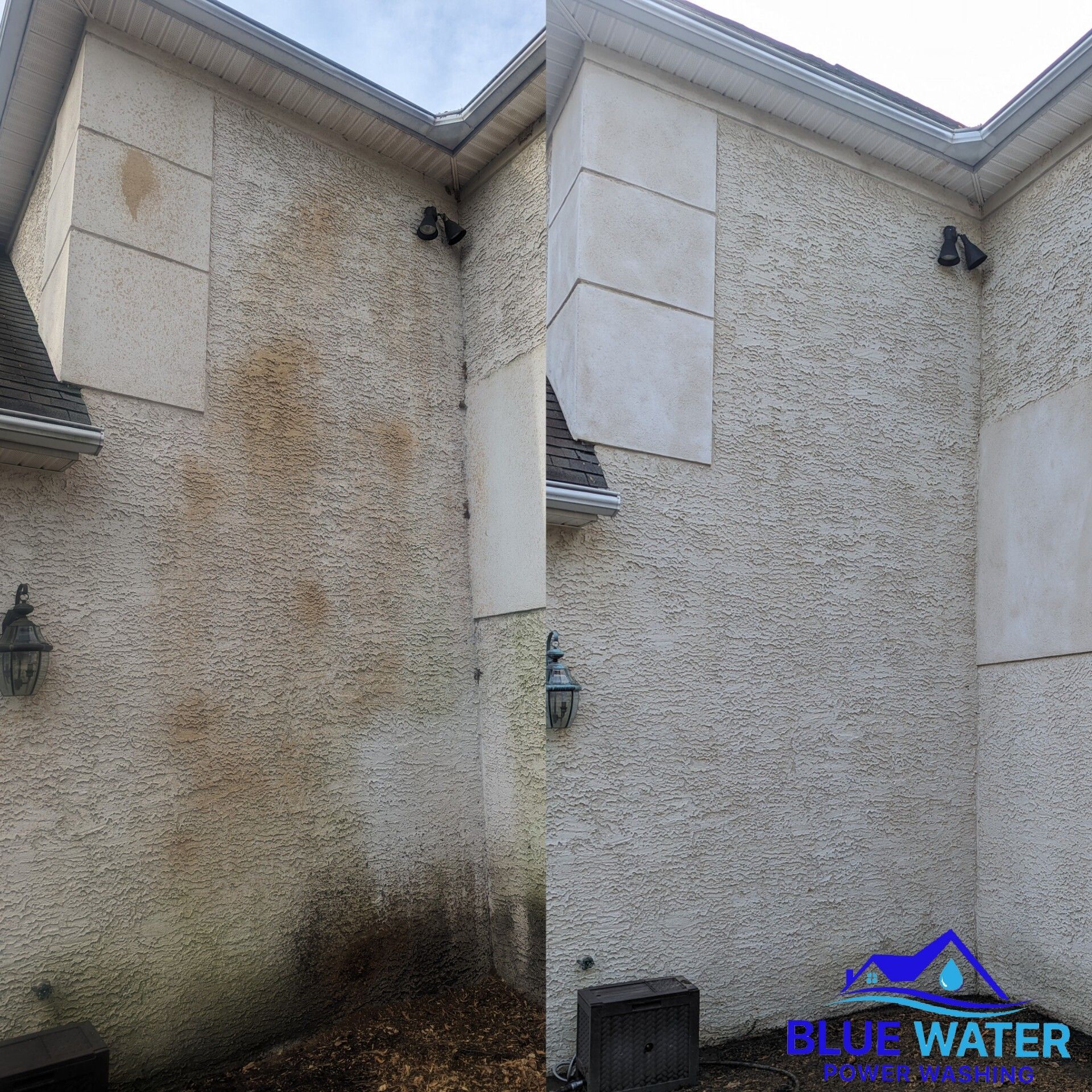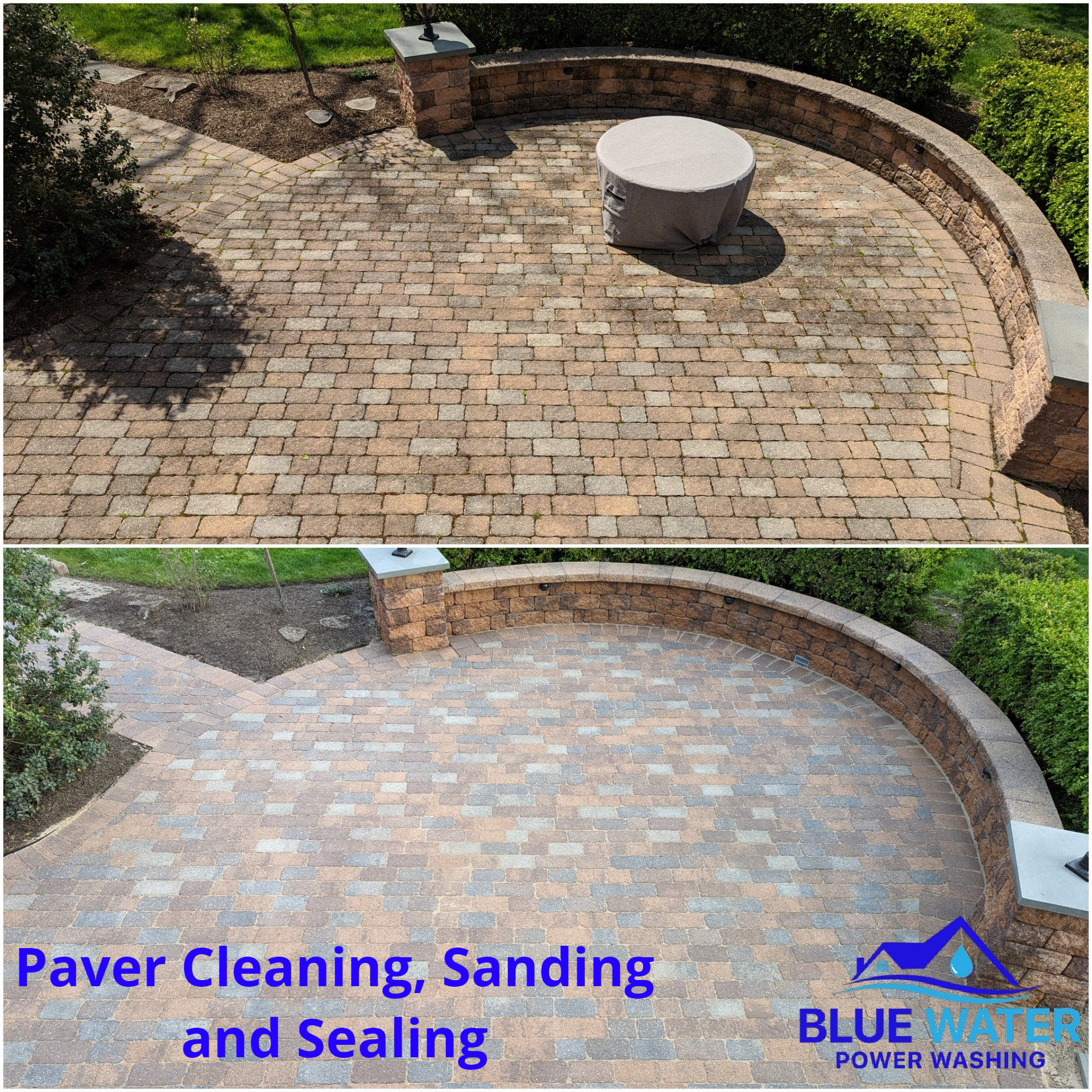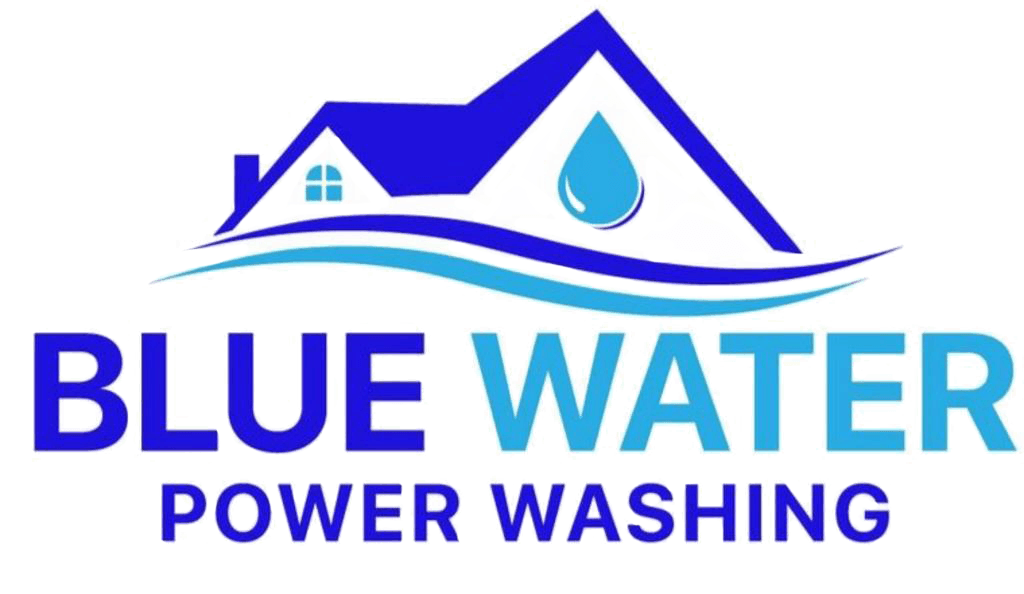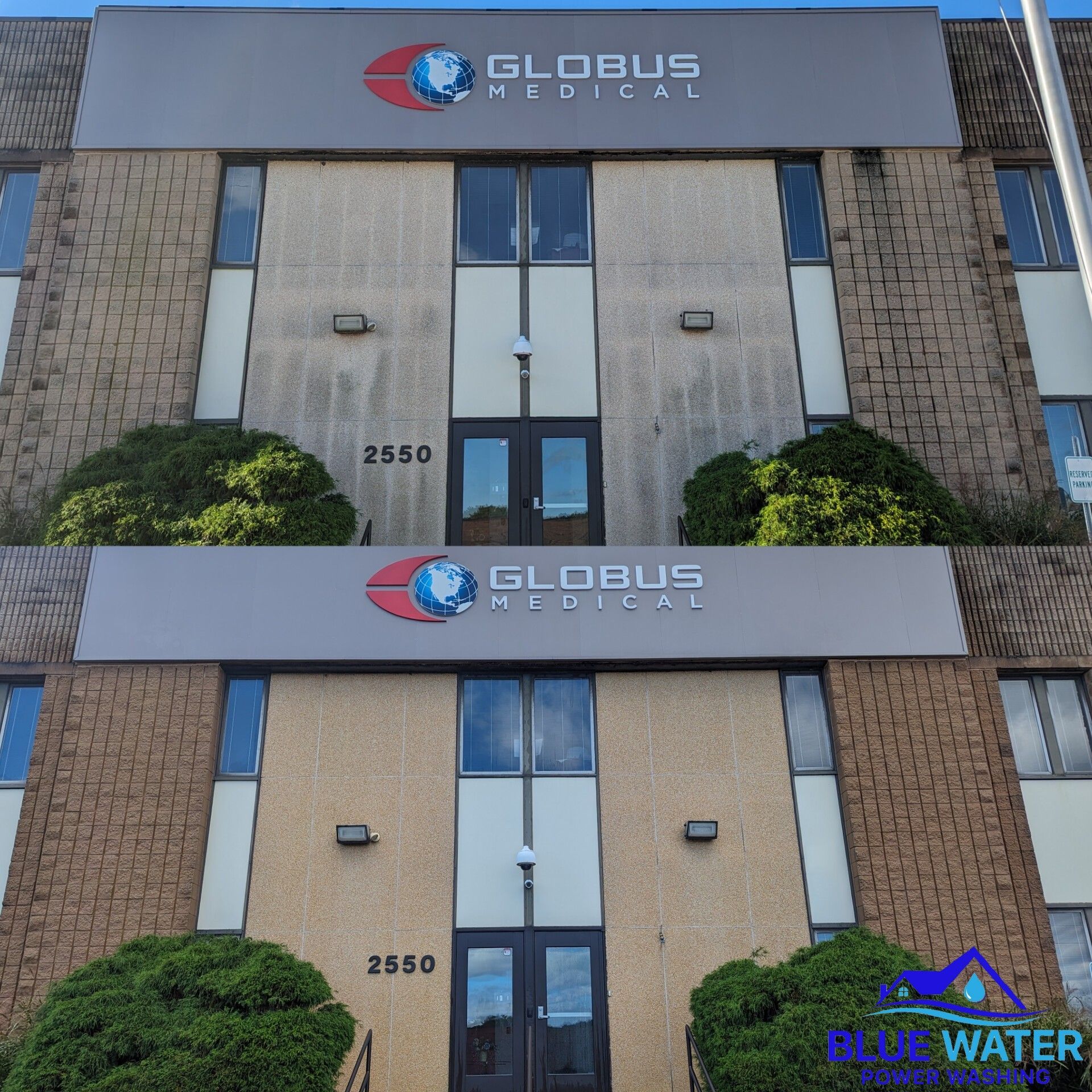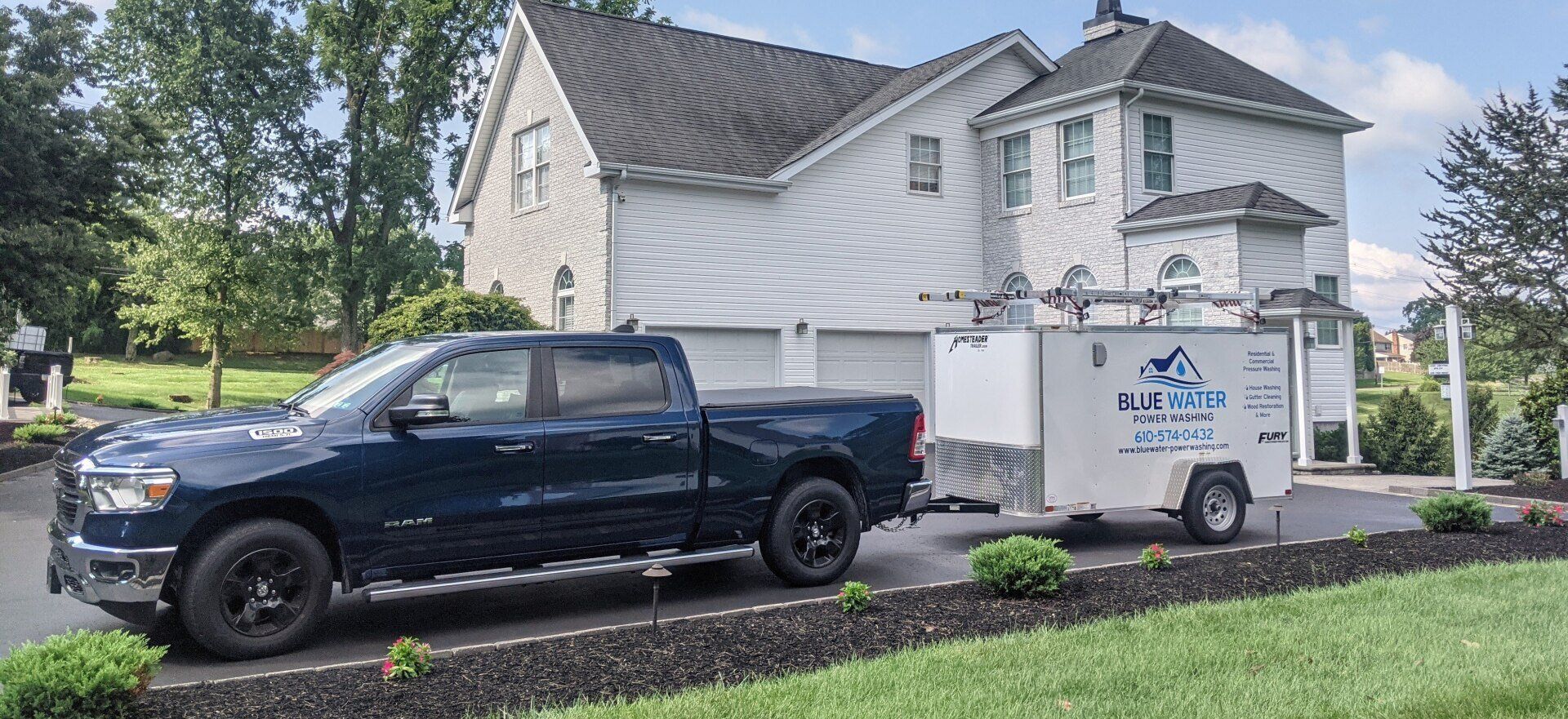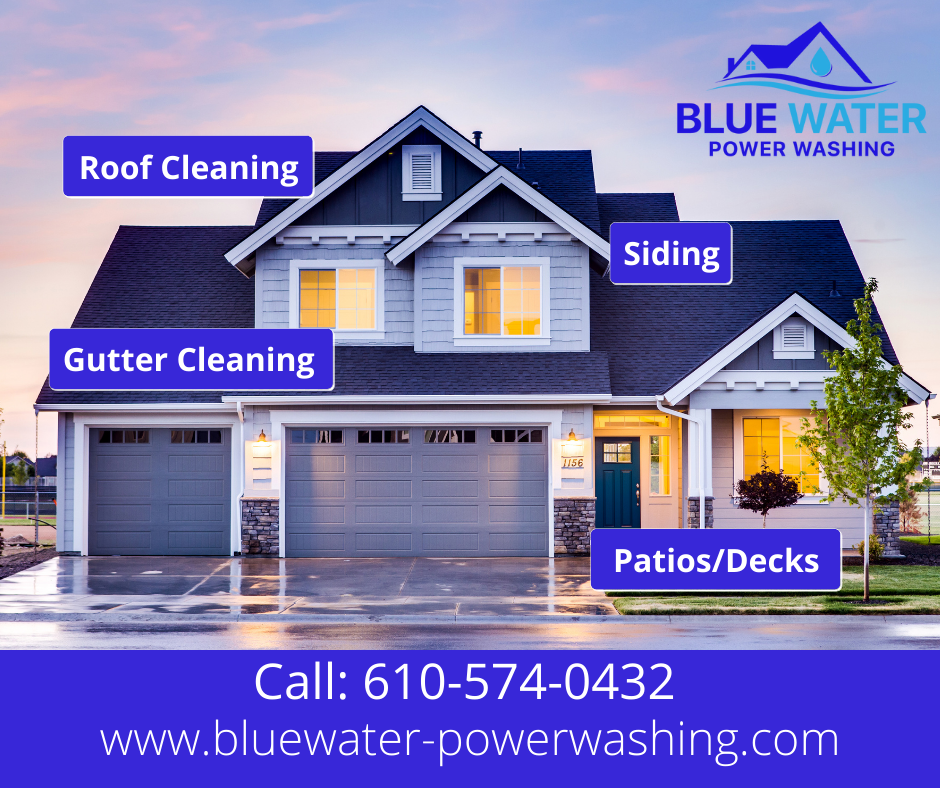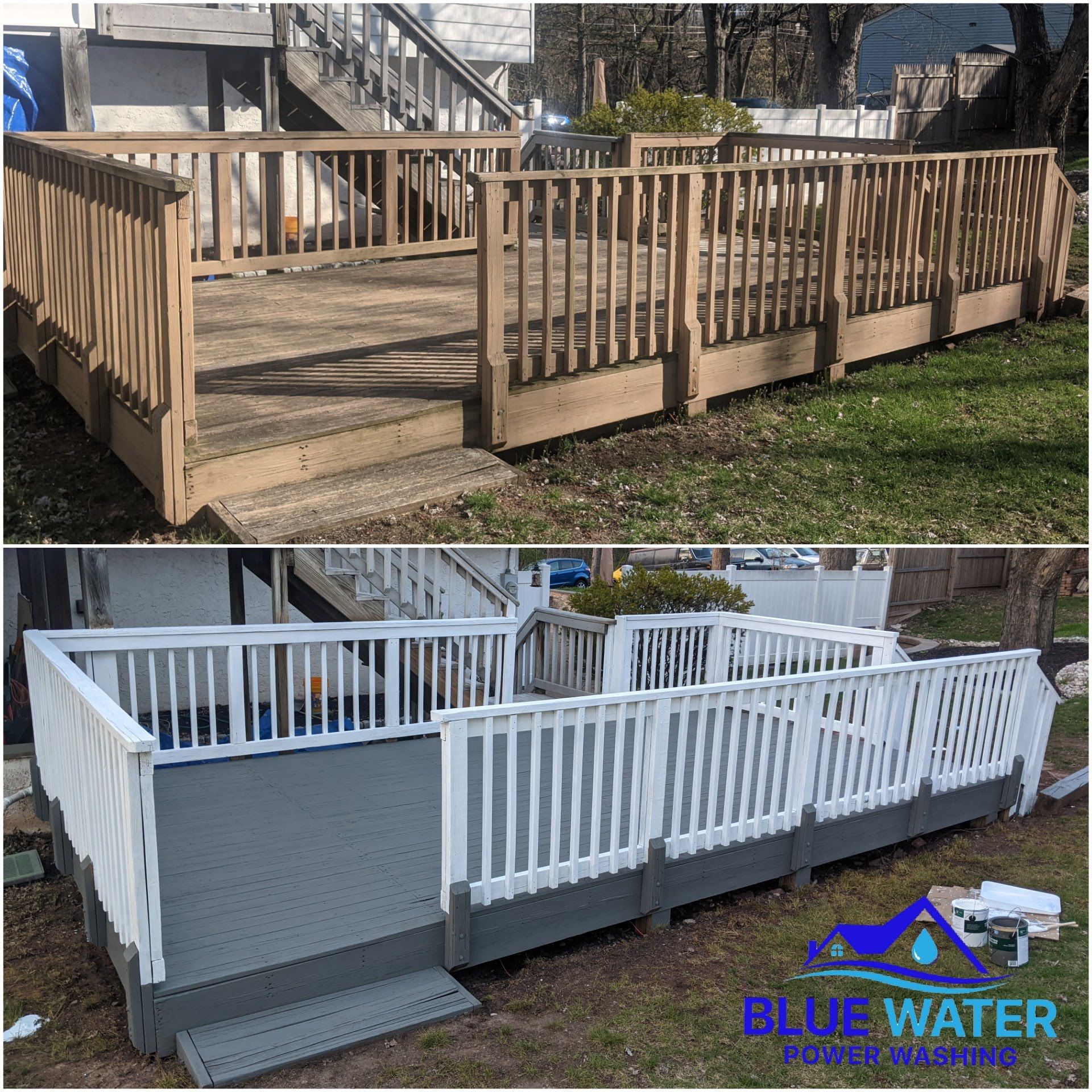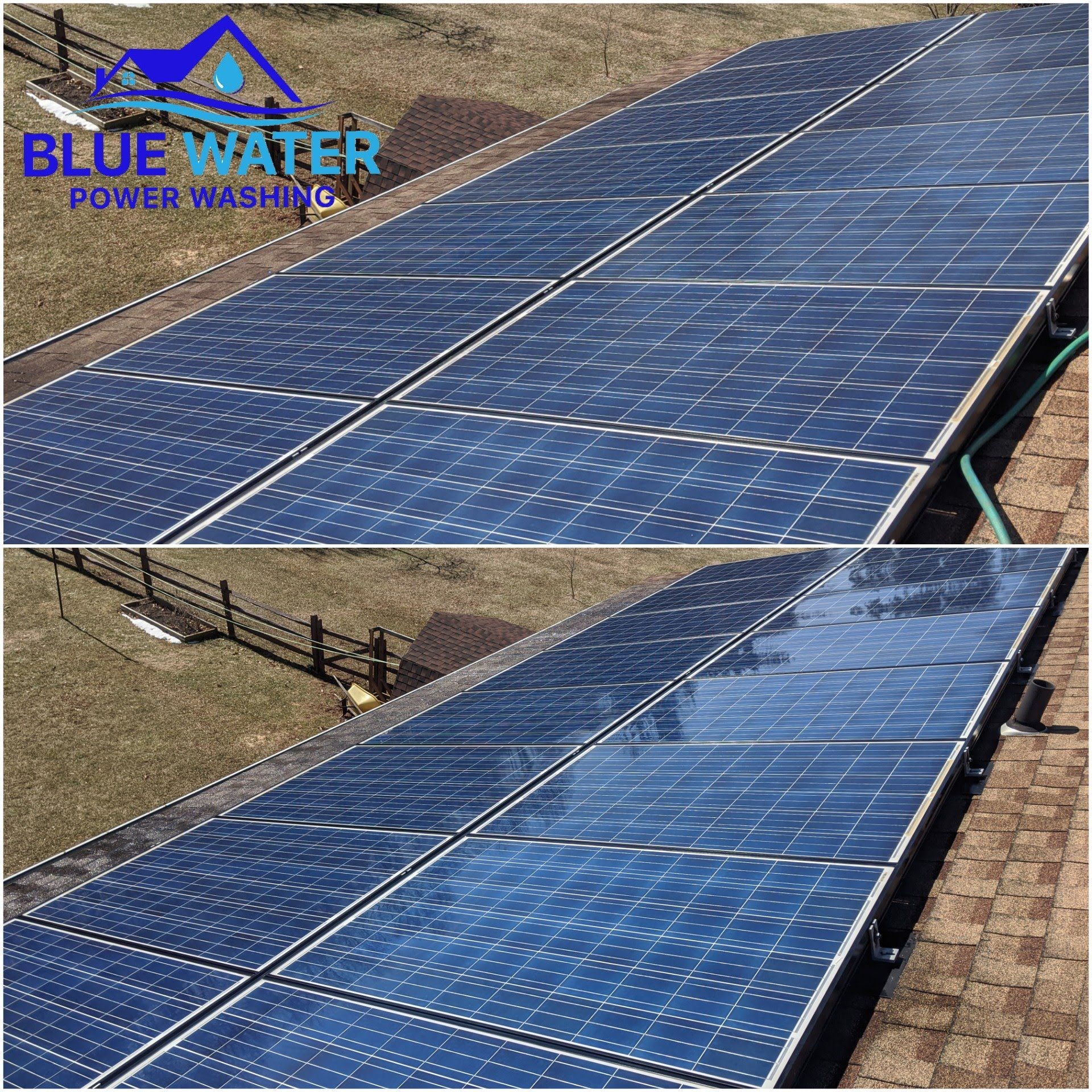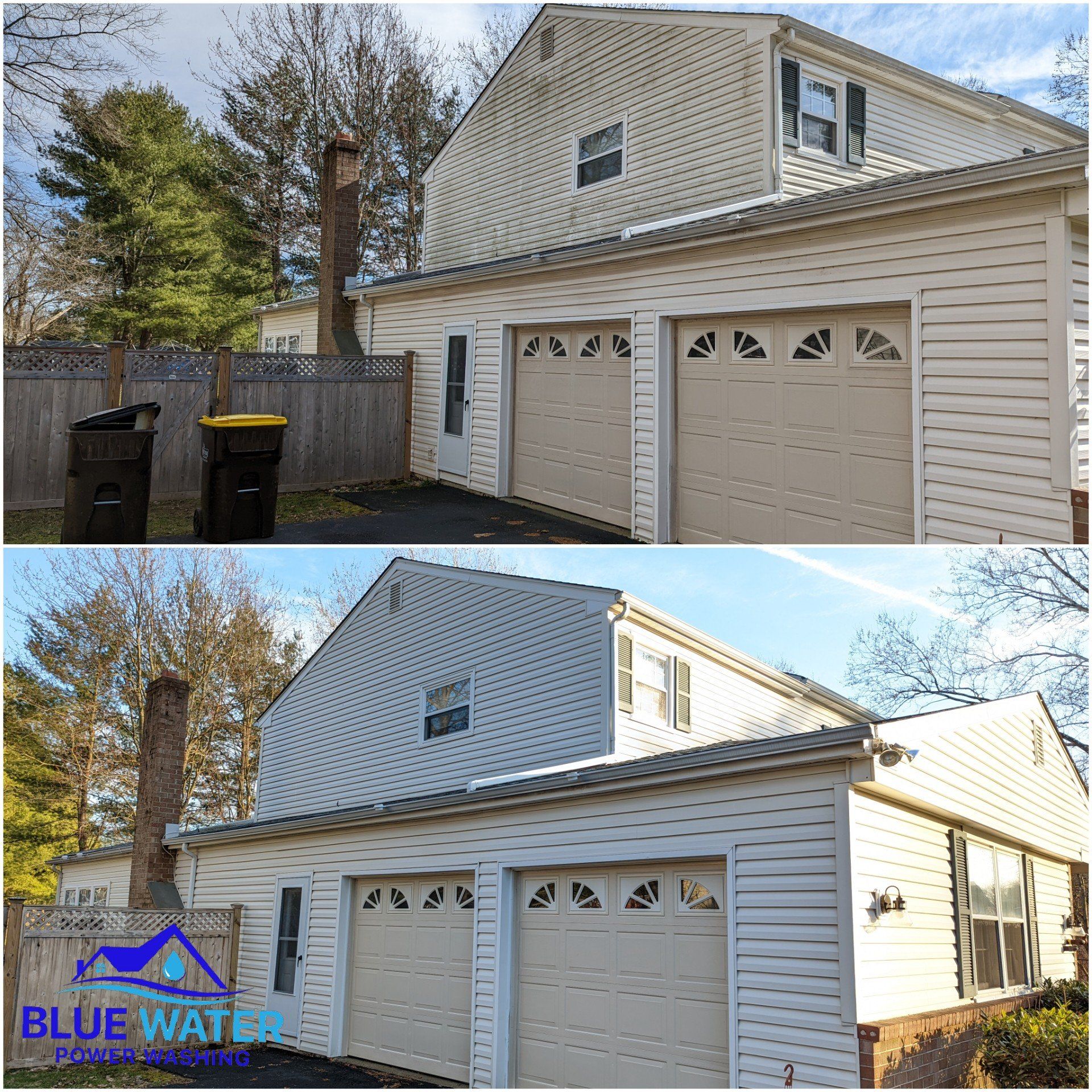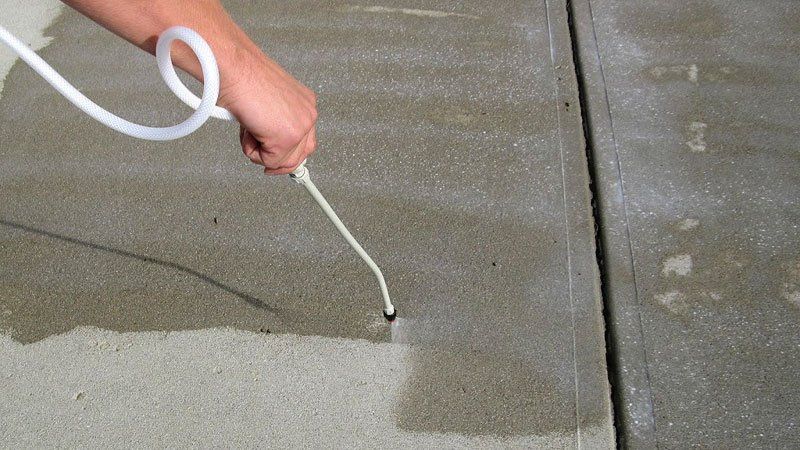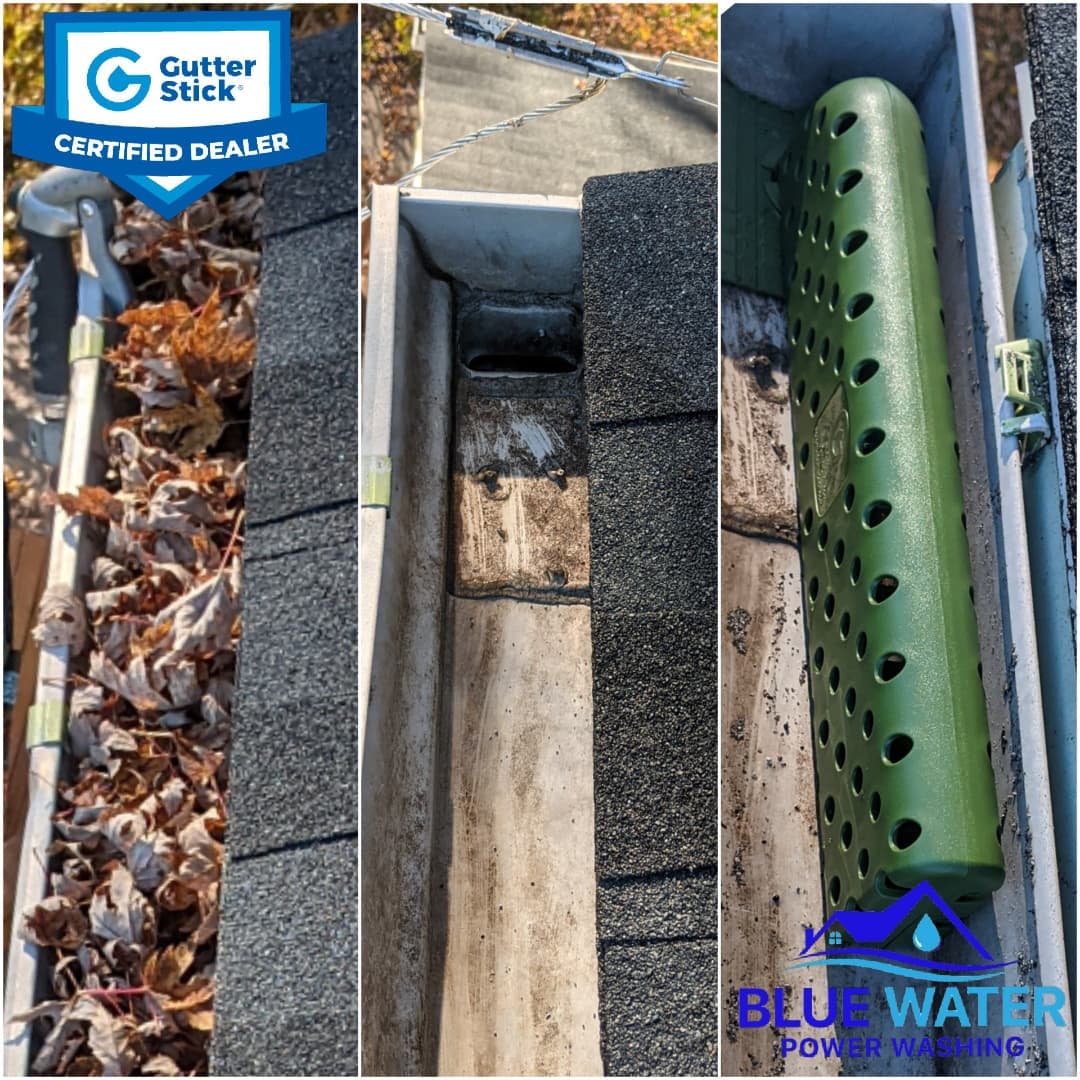Stucco Soft Wash - Pollen Staining
In this article we will discuss a certain type of staining we came across when solving a clients concern.
The Problem Presented - A Brief Story
A client reached out to us with concerns other contractors were not able to remedy, or even had a clue about what they were up against. The area in question was stucco siding behind large pine trees. While the pine trees covered up the staining, the client was removing the trees to redo their landscape and brighten up the front of their home. As you can see in the picture to the side, there is an unknown heavy brown staining up the whole side of the home, with higher concentration in certain areas. Then at the bottom, there is typical organic growth of algae plus mulch splash staining. As well as mud dauber nests built where the walls connect. The client had other contractors come out to inspect and no one could figure it out. I myself was unsure but reached out to a few contractors within my network. We thought it may be fertilizer staining from a landscape company sparying the trees that were formally there. I thought it could have been from an irrigation system with iron in the water causing rusting to happen over time. However, further research found that it was pollen staining.
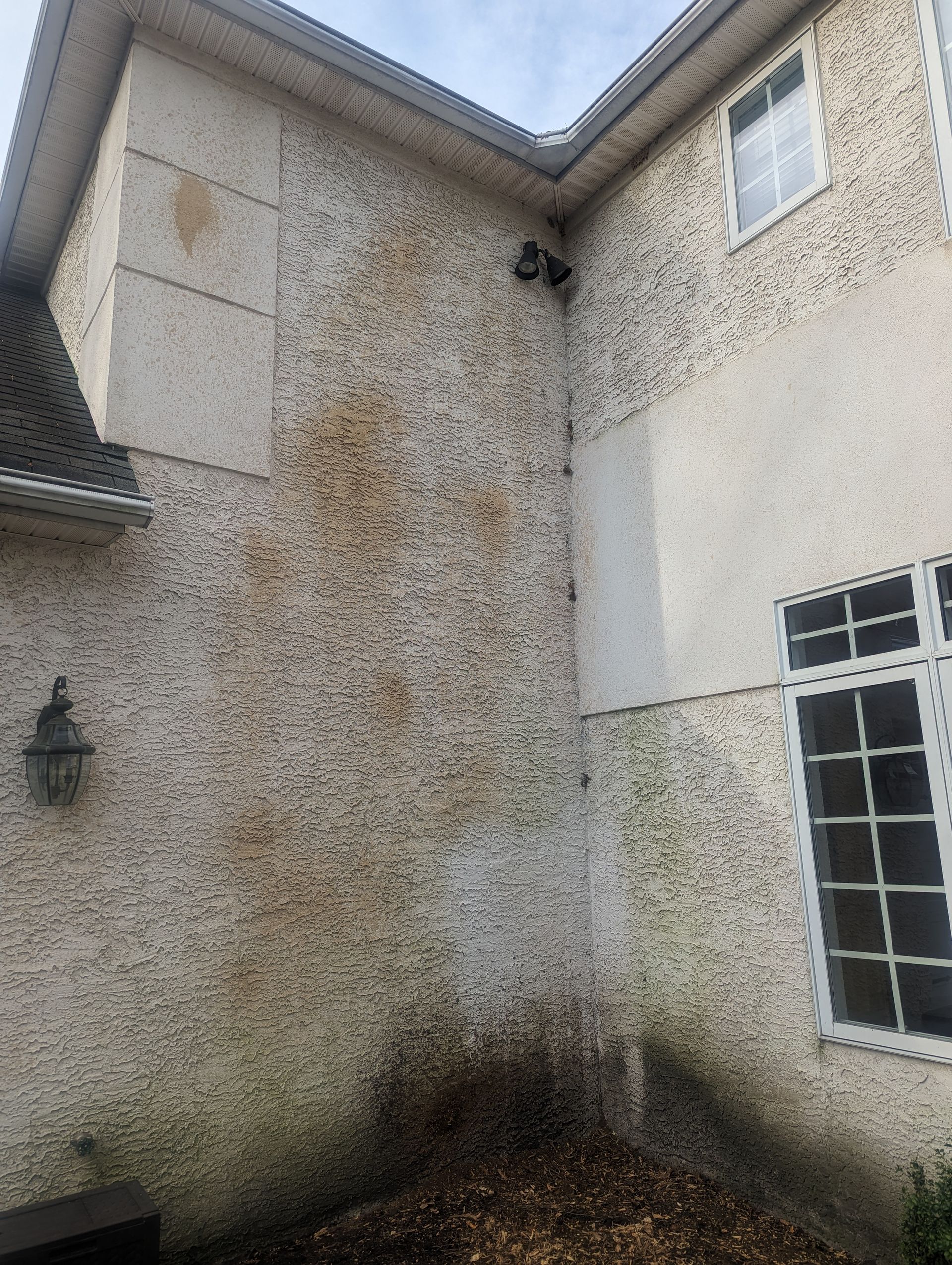
Plan of Attack :
Test different chemicals to determine cleaning efficency
When presented with a new problem we undergo a procedure for testing to see what will help clean the staining presented with as best results with least amount of chemical application. The process always goes from least to most aggressive, treating from orgaininc to inorganic. First step is to always try just water, ranging in pressure while keeping in mind the substrate. This home being stucco, to not exceed 2,000 psi when soft washing to not knock any bits off. Second is to test Sodium Hypochlorite, commonly referred to as bleach. This helps clean organic growth. It worked on the lower dark staining but did not help clean the pollen staining off. Third step is to test a degreaser, Sodium Hydroxide, to see if the staining is a fat, oil or protein based stain. Once again the degreaser did not aid in the cleaning of the pollen staining. The final step is to use an acid, Hydrochloric Acid, in this case. We prefer using One Restore by Eaco Chem since it had added buffers to make the product safer to handle. We applied the chemical with a pump up sprayer, let the acid work for about 5 minutes, applied a second coat, then washed off with about 1,200 psi hot water. This did the trick and allowed us to schedule the job with the client with confidence that his home would be cleaned properly.
Refer to the picture to the right to see the test spot -->
Sodium Hypochlorite
The active ingredient in bleach - is used to clean orgainc growth such as algae, mold and mildew. Most commonly used chemical in power washing to clean and sanatize different substrates
Sodium Hydroxide
Most commonly known as a degreaser, it is used to remove inorganic staining resulting from fats, grease, oil and protein deposits. We primarily use this chemical for stripping oil based deck stains and removing oil stains from concrete as well as dumpster pads at fast food restaurants.
Hydrochloric Acid
This is a hazardous chemical and should only be used by professionals with proper PPE. The acid etchs away the top layer of the surface in aid to pressure washing. In this case, low pressure, to not damage the delicate stucco surface.
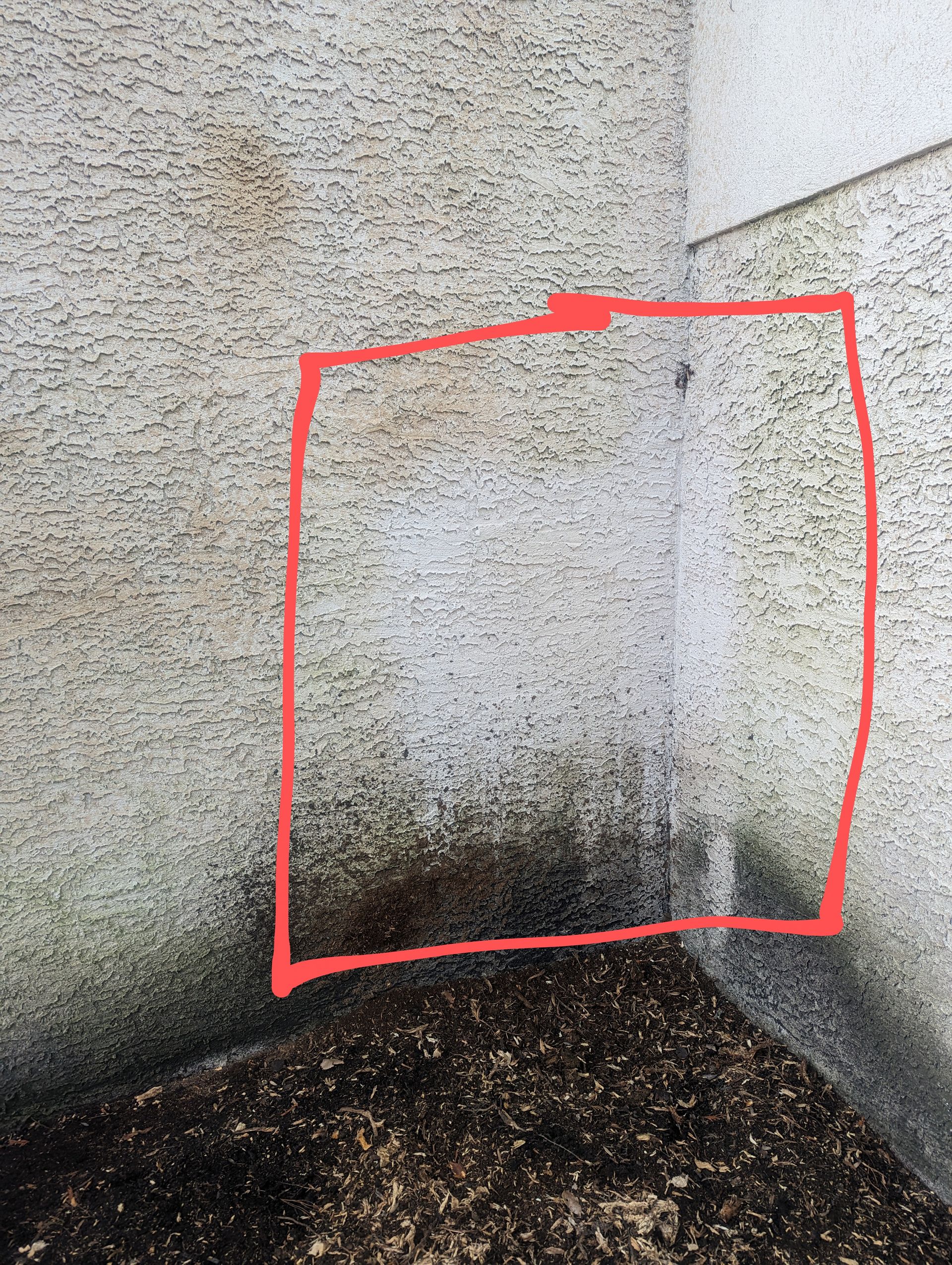
Cleaning Process - Final Results
We scheduled the cleaning for a warmer day in Februaray above 45 degrees to allow the chemical a more workable temperature. We worked in sections of about 10' x 10' areas starting from the bottom to the top to ensure areas to be cleaned were not saturated and diluted with water when the chemical was applied. Some areas where there was heavier staining, needed a second application after rinsing to ensure the surface was completely cleaned and the hydrochloric acid could do its job. While it was more time consuming then a traditional house wash with only algae staining, the client was very thrilled as were we especially since they were cautious that they may have to repaint the stucco.
